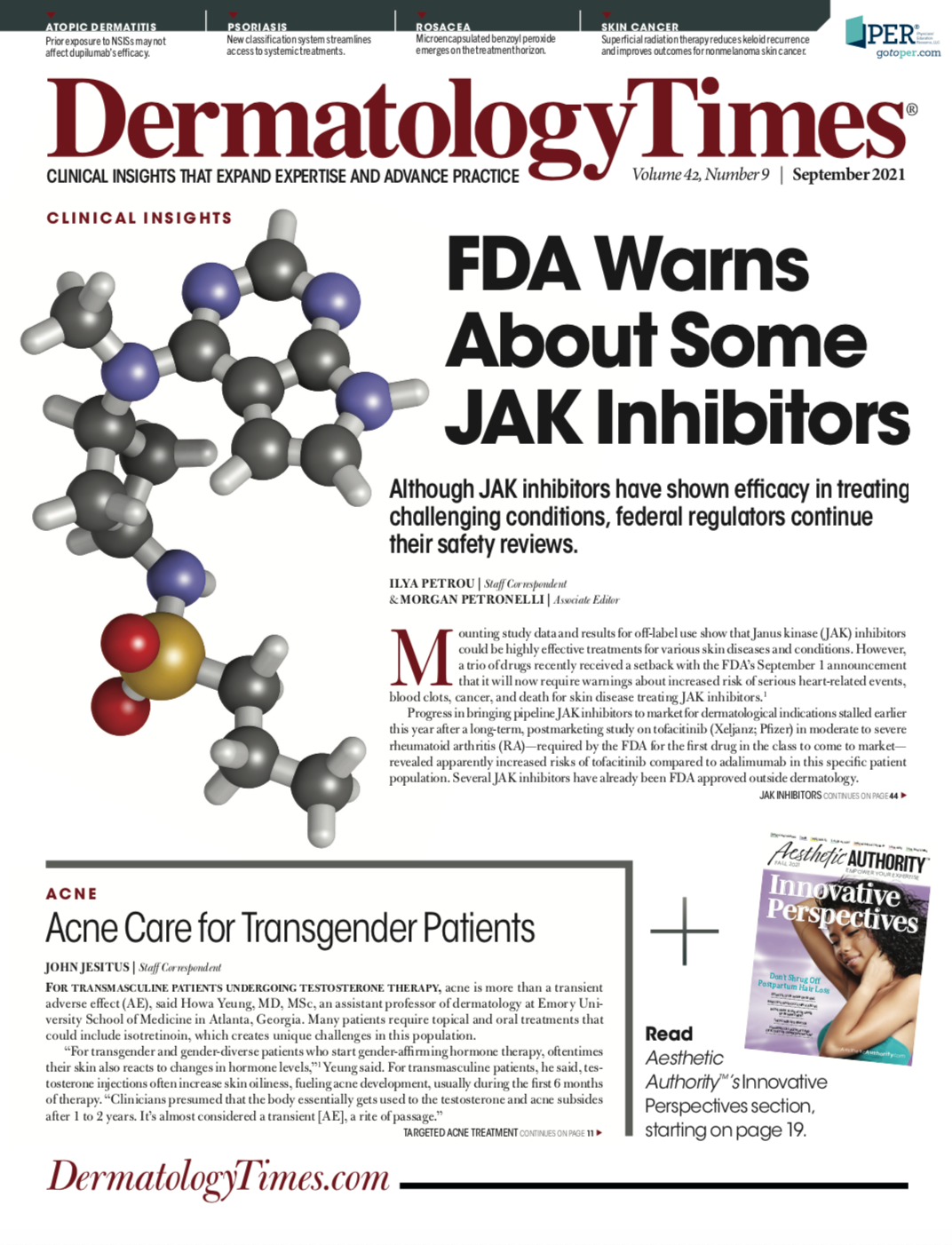- Case-Based Roundtable
- General Dermatology
- Eczema
- Chronic Hand Eczema
- Alopecia
- Aesthetics
- Vitiligo
- COVID-19
- Actinic Keratosis
- Precision Medicine and Biologics
- Rare Disease
- Wound Care
- Rosacea
- Psoriasis
- Psoriatic Arthritis
- Atopic Dermatitis
- Melasma
- NP and PA
- Skin Cancer
- Hidradenitis Suppurativa
- Drug Watch
- Pigmentary Disorders
- Acne
- Pediatric Dermatology
- Practice Management
- Prurigo Nodularis
- Buy-and-Bill
Publication
Article
Dermatology Times
Nebulous Nail Issues
Author(s):
In this month's Cosmetic Conundrums column, Dermatology Times® Chief Medical Editor Zoe Diana Draelos, MD, dives into the issues of nail care. She explains why nails peel, how to prevent it, and so much more!
Q: Why do nails peel and how can this be prevented?
Nail peeling is a common problem that ultimately results in nail breakage. Nails peel because the protein forming the nail has become dehydrated. Remember, the plasticizer of the nail is water. Frequent handwashing with strong detergents is accompanied by frequent nail washing with strong detergents, and damage can occur to both the skin barrier and the nail structure.
Zoe Diana Draelos, MD, chief medical editor, Dermatology Times®

The best way to minimize nail peeling is to protect the nail from all solvents, including water. Wearing gloves while washing dishes or performing other cleaning activities is a must for individuals prone to nail peeling. Once the water has been removed from the nail plate, it cannot be permanently replaced. So, prevention is important. The water can be replaced temporarily by opening up water-binding sites on the nail plate with lactic acid and/or urea. Many therapeutic moisturizers are available that contain these ingredients that can be used on the nails nightly (AmLactin; Advantice Health). The moisturizer can be rubbed into the nail for increased hydration and also into the cuticle to soften the tissue.
For people with severe peeling nails, nail polish can be considered to strengthen the nail plate and prevent peeling. Nail polish is not problematic; however, the acetone or acetone-free nail polish removers are very drying to the nail plate and may encourage peeling when the polish is removed. For this reason, it is best to remove the nail polish as infrequently as possible. Applying a base coat, the pigmented nail polish, and then a topcoat can extend the wear time of nail polish. Using these 3 layers extends nail polish wear. Most professional manicurists use this 3-layer technique when applying nail polish to extend wear.
Q: Why do toenails separate from the nail bed?
Toenails can become detached from the underlying nail bed, providing a location for fungal infection and making the toenails unattractive. A common cause for toenail separation is trauma, such as stubbing the toes. However, a more insidious cause is wearing shoes that are too short. The constant pressure of the toenail against the toe box of the shoe can detach the toenail from the nail bed. Increased pressure is also exerted when wearing high heels where the toe is pushed into the toe box by the architecture of the shoe. Once a toenail detaches from the nail bed it cannot be reattached, but further detachment can be prevented by proper shoe selection.
To prevent fungal infection in the potential space between the toenail and the nail bed, I recommend that my patients use an eyedropper to put plain white vinegar into the space. Vinegar, composed of acetic acid, will acidify the tissue and prevent the growth of fungal organisms capable of causing tinea unguium. However, if onychomycosis has occurred, the vinegar is not effective in treating the infection, because it does not have adequate access to the infected space.
Q: What is recommended to prevent cuticles from splitting?
As mentioned earlier, application of a moisturizer is the best way to prevent cuticles from splitting. The same moisturizer with lactic acid and/or urea can also soften the cuticle by digesting the protein and increasing water absorption. If the torn cuticle is painful, the pain can be diminished by putting a drop of cyanoacrylate glue, super glue, or Krazy Glue, on top of the open wound. This will provide waterproof protection and prevent infection while controlling pain. The glue will need to be applied daily until healing occurs because it can be removed with several hand washings.
Q: What is the best time to cut toenails?
Many mature patients have toenails that are thickened and hard to cut due to onychomycosis or advancing age. The best time to cut the toenails is after a tub bath because water will hydrate the nail plate and, as mentioned earlier, transform the keratin from a hard substance to a more plastic substance. This means the force required to cut the toenails will be decreased. If a bath is not possible, patients should soak their feet in a dishpan with warm water and several drops of liquid hand dishwashing detergent. The detergent will remove any oily residue from the nails and allow the water to optimally hydrate the nails. Thirty minutes of soaking is optimal followed immediately by the cutting of the nails. The water will evaporate from the nails quickly, restoring them to their previous hard state.







